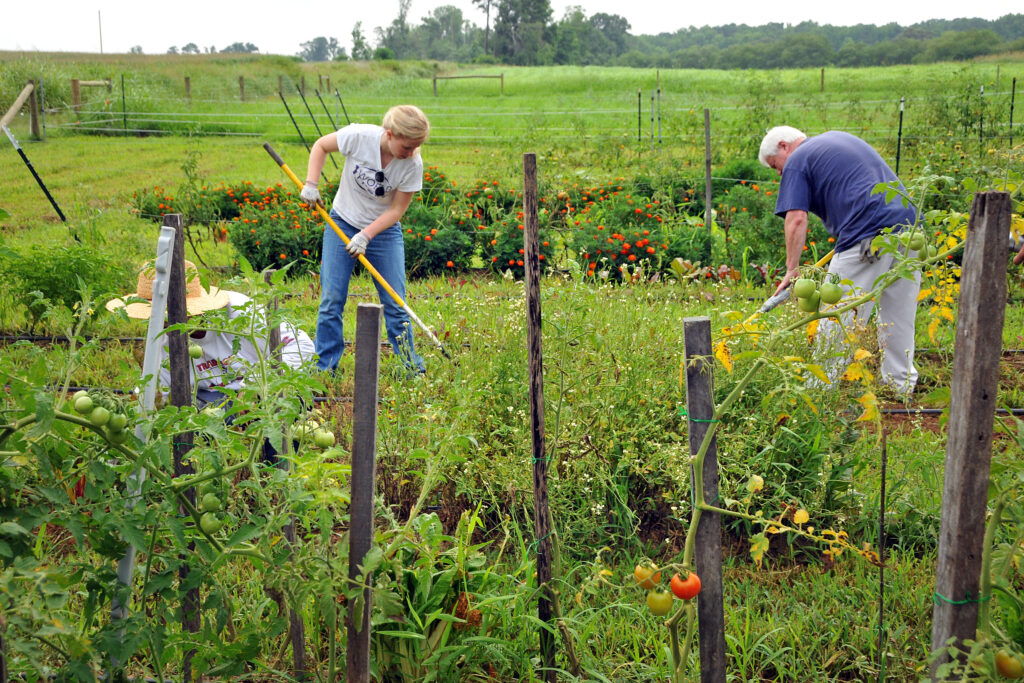Benefits of Vegetable Gardening
go.ncsu.edu/readext?783406
en Español / em Português
El inglés es el idioma de control de esta página. En la medida en que haya algún conflicto entre la traducción al inglés y la traducción, el inglés prevalece.
Al hacer clic en el enlace de traducción se activa un servicio de traducción gratuito para convertir la página al español. Al igual que con cualquier traducción por Internet, la conversión no es sensible al contexto y puede que no traduzca el texto en su significado original. NC State Extension no garantiza la exactitud del texto traducido. Por favor, tenga en cuenta que algunas aplicaciones y/o servicios pueden no funcionar como se espera cuando se traducen.
Português
Inglês é o idioma de controle desta página. Na medida que haja algum conflito entre o texto original em Inglês e a tradução, o Inglês prevalece.
Ao clicar no link de tradução, um serviço gratuito de tradução será ativado para converter a página para o Português. Como em qualquer tradução pela internet, a conversão não é sensivel ao contexto e pode não ocorrer a tradução para o significado orginal. O serviço de Extensão da Carolina do Norte (NC State Extension) não garante a exatidão do texto traduzido. Por favor, observe que algumas funções ou serviços podem não funcionar como esperado após a tradução.
English
English is the controlling language of this page. To the extent there is any conflict between the English text and the translation, English controls.
Clicking on the translation link activates a free translation service to convert the page to Spanish. As with any Internet translation, the conversion is not context-sensitive and may not translate the text to its original meaning. NC State Extension does not guarantee the accuracy of the translated text. Please note that some applications and/or services may not function as expected when translated.
Collapse ▲
Faculty and staff volunteers weed around crops at the Agroecology Education Farm during a volunteer workday.
Gardening has benefits that are greater than the amount of food produced. Many gardeners grow vegetables for the outstanding flavor and freshness of homegrown produce or to reduce the family’s food budget. Still, others view vegetable gardening as a relaxing escape from everyday stresses. The food they produce may be secondary to the sense of joy and accomplishment they get from caring for the garden and sharing produce with neighbors and friends.
Successful vegetable gardening begins with selecting a site, planning what to grow, and preparing the soil. Once the garden area is ready, vegetables are selected, planted, and nurtured until the produce is ready to harvest. Vegetable gardening can be accessible to anyone with a sunny space, seeds, water, fertilizer, and patience.
Before putting on your garden gloves and planting seeds in the soil, give careful thought to the weather and types of vegetables that work best for your lifestyle. Consider the size of your family, the vegetables you wish to grow, the health of the soil, and how much time and money you have to invest in a vegetable garden.
The most common vegetable plant grown in a home garden in Stokes County is tomatoes. They are one of the few vegetables that have the ability to produce roots along their stem. Using this knowledge, you can plant the root ball two or three inches deeper than the soil level at planting time, resulting in plants with larger, more substantial root systems. Tomato plants should be spaced at least three feet apart and place a support system around plants to assist them as they grow. Also, mulching the soil underneath and around tomatoes will help regulate soil moisture and keep soil temperatures cooler during the summer.
If you have questions about growing a garden, or need help getting started, contact Bryan Hartman, Agriculture & Natural Resources agent, at 336-593-8179 or bkhartman@ncat.edu.
Learn more from Extension fact sheets: “Vegetable Gardening: A Beginner’s Guide.”




